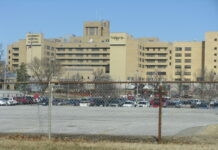Photo credit: DiasporaEngager (www.DiasporaEngager.com).
Discussion
During 2021–2022, a total of 1,282 U.S. residents had culture-confirmed infections caused by REPJJP01, an MDR strain of S. Newport. The total number of cases of illness is likely much larger: an additional 29 cases of Salmonella are estimated for each culture-confirmed case (6). Further, the sharp increase in cases of REPJJP01 during 2021 occurred despite an overall decrease in Salmonella reports during the COVID-19 pandemic (7). Patient exposures and outbreak sources resembled those identified in the 2018–2019 investigation (1), including travel to Mexico, consumption of beef and cheese products purchased in Mexico, and consumption of beef products obtained in the United States.
This strain might spread to the United States through returned travelers from Mexico, cattle born or raised in Mexico and slaughtered in the United States, or beef or cheese imported from Mexico. The increase in cases during 2021–2022 appears driven partially by travelers; the 48% of patients who reported travel to Mexico is high compared with the 9% of all patients with nontyphoidal Salmonella reporting any international travel.¶¶ In September 2022, CDC posted a Level 1 Travel Health Notice to alert travelers to Mexico about the risk for infection and to provide advice for prevention.*** Travelers should practice safe eating, drinking, cooking, and food handling habits to reduce their chance of becoming ill. Among nontravelers, the high proportion of Hispanic patients and patient reports of eating beef or cheese purchased by family or friends in Mexico suggests that beef or cheese imported from Mexico might be an important source of illness.†††
The REPJJP01 strain might also spread within the United States through animals or beef products. The strain has been isolated in samples collected in federally regulated slaughter and processing establishments throughout the United States and import establishments on the Southern border. The isolation of this strain from a beef product collected during a 2022 multistate outbreak investigation suggests cattle infected with Salmonella in the United States might serve as a potential source of contamination. During outbreaks, the source of implicated beef products is difficult to identify because patients report consuming beef products both inside and outside the home, shopper history records or receipts are often not available, and traceback is complex, with challenges including incomplete retail grinding logs and multiple products combined in retail products (8). Steps to prevent contamination of beef products might occur across the food production chain, including at preharvest (e.g., herd and biosecurity management), slaughter (e.g., appropriate sanitary dressing procedures and application of effective antimicrobial solutions), processing, and retail (8). Consumers should wash hands and surfaces after preparing raw meat at home and use a thermometer to ensure appropriate cooking temperatures are reached (9).
Some persons infected with REPJJP01 became seriously ill: 33% of all patients, 37% of non-travelers, and 40% of Hispanic patients were hospitalized, compared with 27% of all patients with nontyphoidal Salmonella infections reporting hospitalization in FoodNet data during 2021–2022. The high hospitalization rate is consistent with studies indicating that patients with antimicrobial-resistant Salmonella infections are more likely to be hospitalized (10). The increase in infections from this MDR strain is concerning because it limits treatment options, has more severe outcomes, and creates opportunities for resistance genes to spread. Clinicians should be aware of the potential for multidrug resistance in recent travelers to Mexico with salmonellosis and should order susceptibility testing to guide antimicrobial selection when treatment is warranted.§§§
Limitations
The findings in this report are subject to at least three limitations. First, the number of illnesses recorded by the public health system is an underestimate of the total number of illnesses. Second, not all patients were able to be interviewed, limiting the ability to collect exposure information. Finally, the proportion of patients reporting travel might be an underestimate, because some patients were only asked about travel during the 4 or 7 days before illness onset.
Implications for Public Health Practice
CDC continues to work with local and state health departments and federal partners to investigate cases of this strain to identify sources of infection and prevent illness. Interventions along the food production chain to ensure beef safety (8) and prevention measures among producers, consumers, and travelers might help to reduce illness from this persisting MDR strain. Consumers should eat beef only if it is cooked thoroughly. Travelers to Mexico should follow food safety practices while abroad (https://wwwnc.cdc.gov/travel/page/food-water-safety); to reduce the chances of illness, travelers should avoid beef (including beef jerky or dried beef) and other foods that are prepared or sold by street vendors. Further research is needed to understand the consequences of decreased susceptibility to azithromycin on clinical outcomes for patients receiving this agent.
Source of original article: Centers for Disease Control and Prevention (CDC) / MMWR (Journal) (tools.cdc.gov).
The content of this article does not necessarily reflect the views or opinion of Global Diaspora News (www.GlobalDiasporaNews.com).
To submit your press release: (https://www.GlobalDiasporaNews.com/pr).
To advertise on Global Diaspora News: (www.GlobalDiasporaNews.com/ads).
Sign up to Global Diaspora News newsletter (https://www.GlobalDiasporaNews.com/newsletter/) to start receiving updates and opportunities directly in your email inbox for free.




























